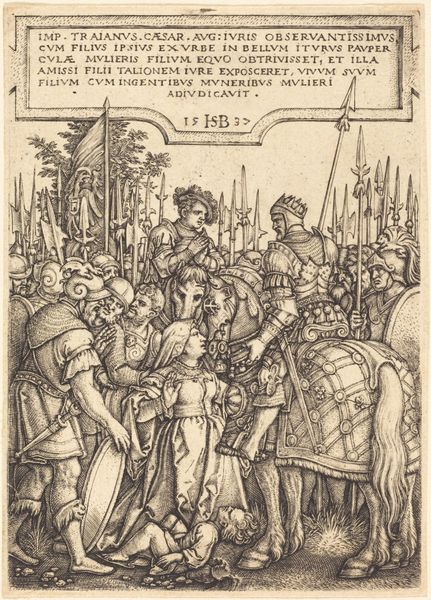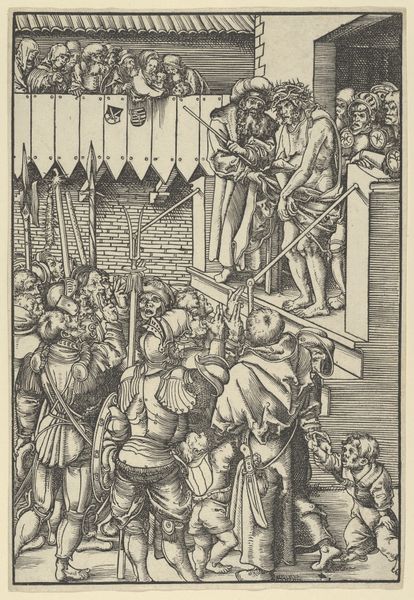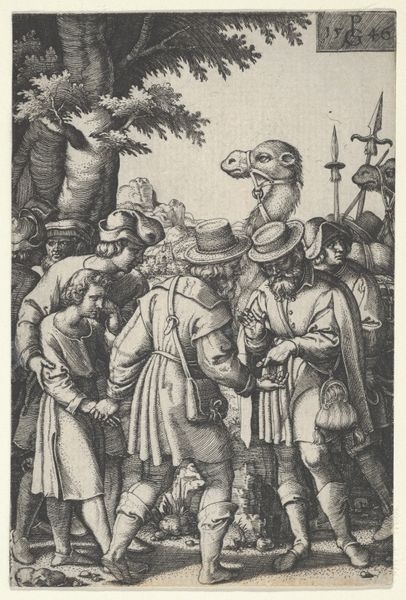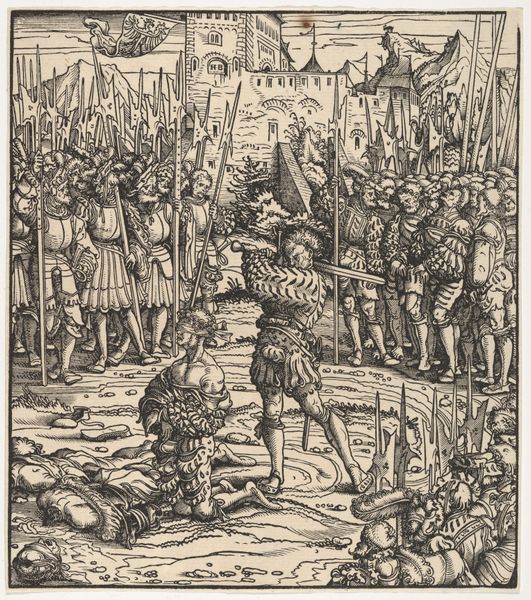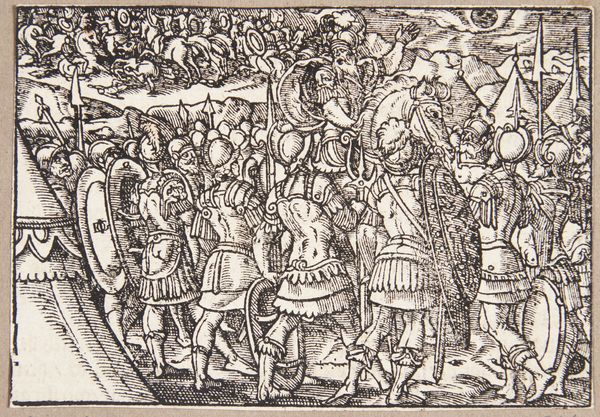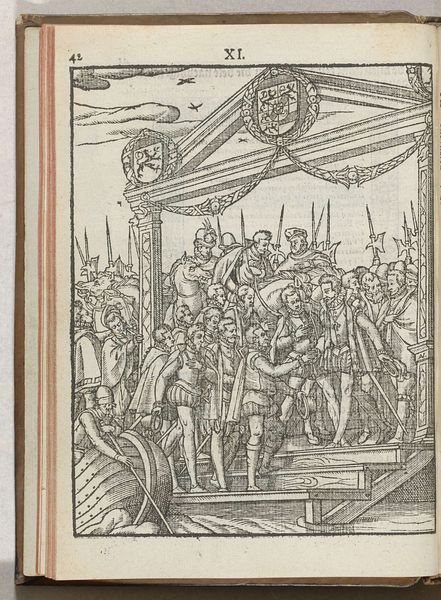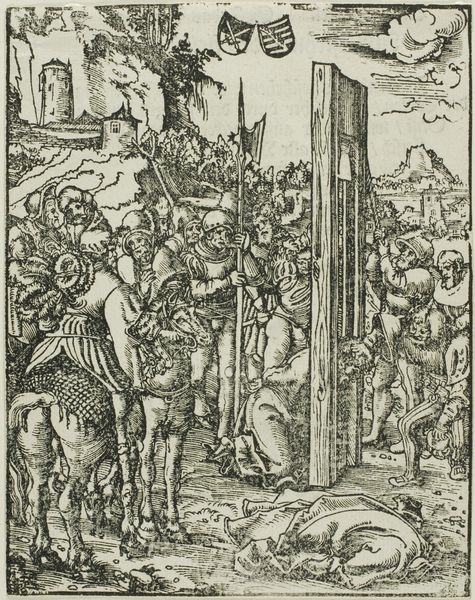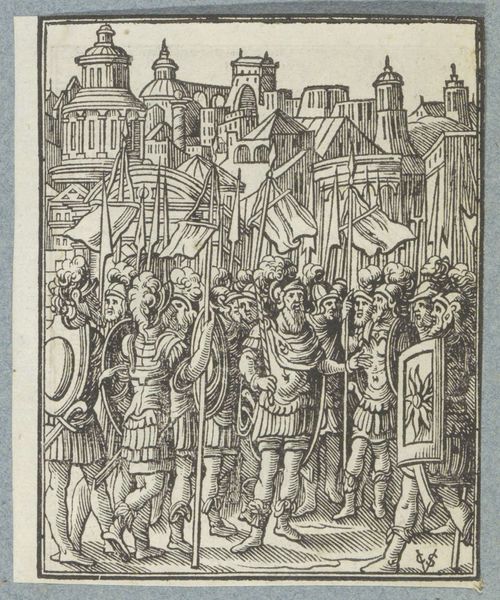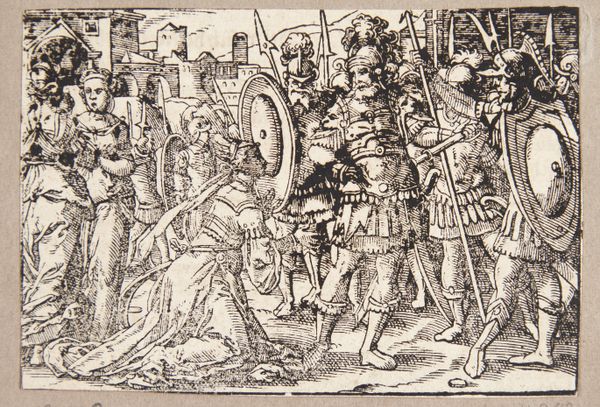
Dimensions: 109 × 78 mm (image/sheet, trimmed within platemark)
Copyright: Public Domain
Curator: Trajan’s Justice, a 1537 engraving by Sebald Beham, feels so starkly dramatic, even theatrical. The rendering is incredible. What strikes you most about this piece? Editor: I'm drawn to the way the scene is staged, almost like a tableau, and it makes me wonder about its connection to broader social commentary. This is clearly more than just an illustration of a historical narrative, isn’t it? What are your thoughts? Curator: Indeed. Consider the material reality of printmaking during the Northern Renaissance. The accessibility of prints meant that ideas, including social critiques, could be disseminated widely, bypassing traditional patrons of the arts. Beham's choice of engraving – a laborious, meticulous process – is crucial here. The very act of creating these tiny lines speaks to a conscious decision to invest time and skill in producing what, due to printing, would become multiples accessible to various viewers. It suggests Beham believed his labor mattered. Editor: So, the act of printing and its broad circulation itself become a statement, then? Curator: Precisely. And consider the narrative itself. The Roman Emperor Trajan submitting to a mother’s plea for justice raises questions about power dynamics and the relationship between rulers and the ruled. Beham is utilizing this imagery of the distant Roman past to say something very specific to 16th-century viewers about the proper exercise of authority within his society, about law and the rights of those with limited material power. What do you suppose was the intent of mass-producing this political claim, as it were? Editor: It casts a new light on what I initially took as simple "history painting." By examining the materiality of the print itself and the conditions of its production and consumption, we've found it suggests layers of meaning within the image. Curator: Yes. The artist isn’t simply representing the past. The past is also speaking back into the material reality of Beham's own era.
Comments
No comments
Be the first to comment and join the conversation on the ultimate creative platform.
